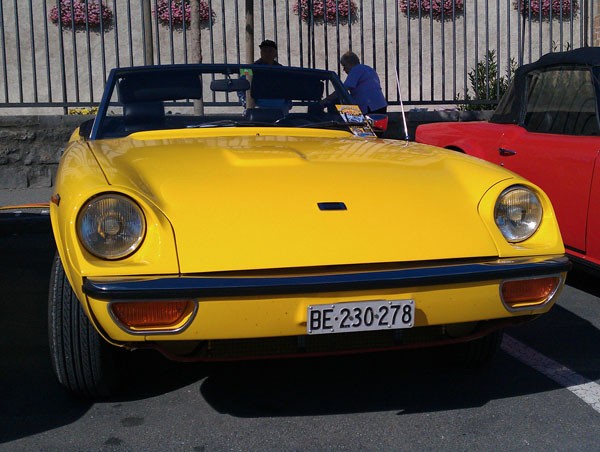The Volkswagen-Porsche 914 was not the only sportscar produced by a joint manufacturing arrangement between two well-known brands in the late 1960s to early 1970s. An even quicker car, the Jensen-Healey made its debut in 1972.
Jensen built bodies for Donald Healey’s successful line of Austin-Healeys right from the start in 1953. These Austin-Healeys were a major export success into the 1970s but BMC was never happy paying royalties to Healey on every car sold, especially when the MG marque was part of BMC. So BMC discontinued the big Healey, introduced the MGC and in 1971 the Austin-Healey Sprite became simply an Austin Sprite.
All this happened at a time when US customers were buying European models in large numbers. The Austin-Healey had been the best selling marque in importer Kjell Qvale’s range of British models which included MG and Jaguar so when he heard that the Healey family had started work on a new sportscar he was extremely interested. Coincidentally Jensen was struggling. Qvale stepped in, bought Jensen and installed Donald Healey as chairman.
Development work on the new sportscar continued. It had a steel monocoque body, with bolt-on outer panels but drew heavily on existing engineering. The body design was drawn up by a freelance designer, William Towns, who had just completed an assignment designing the new DBS Aston Martin. The new design had a hint of TR6 at the rear with a low bonnet-line at the front. Engine choice was not as straightforward.
A compact engine was essential and motors from Ford, Vauxhall and BMW were all considered but finally a new Lotus 16-valve slant-four, all-alloy 1973cc was chosen. It was an attractive option not only being cheaper and more powerful but also because it came with an efficient new head that promoted clean combustion, so it could pass new US emission regulations.
The new car was released in 1972 but almost immediately there were problems both with the engine and the body. The Lotus engine lost oil and would not start if parked on a hill, while body rust was apparent only weeks after sale. Correcting these problems increased costs which helped hasten Jensen’s demise by mid-1976. Sales remained slow, hampered by the reputation for unreliability which never left the Jensen-Healey.
This was a pity as the car did have some good features. Its road manners were excellent and it drove well, even if a little old- fashioned for its time with a conventional front-engine rear-drive layout and a live rear axle. It had an inviting cabin, and not only sounded like a sports car but performed like one. In total 10,926 Jensen-Healeys, including GTs, were produced between 1972 and 1976.









